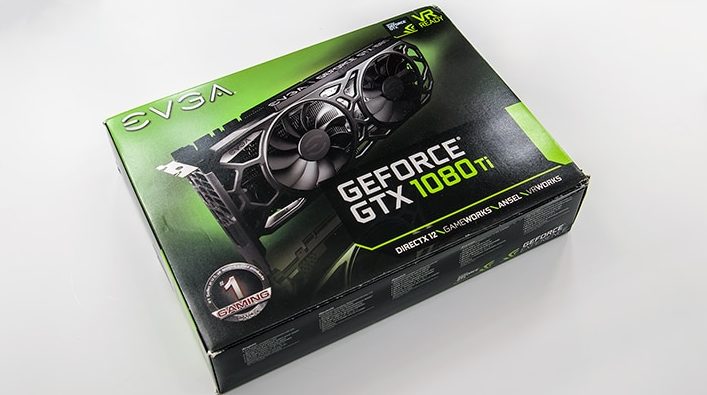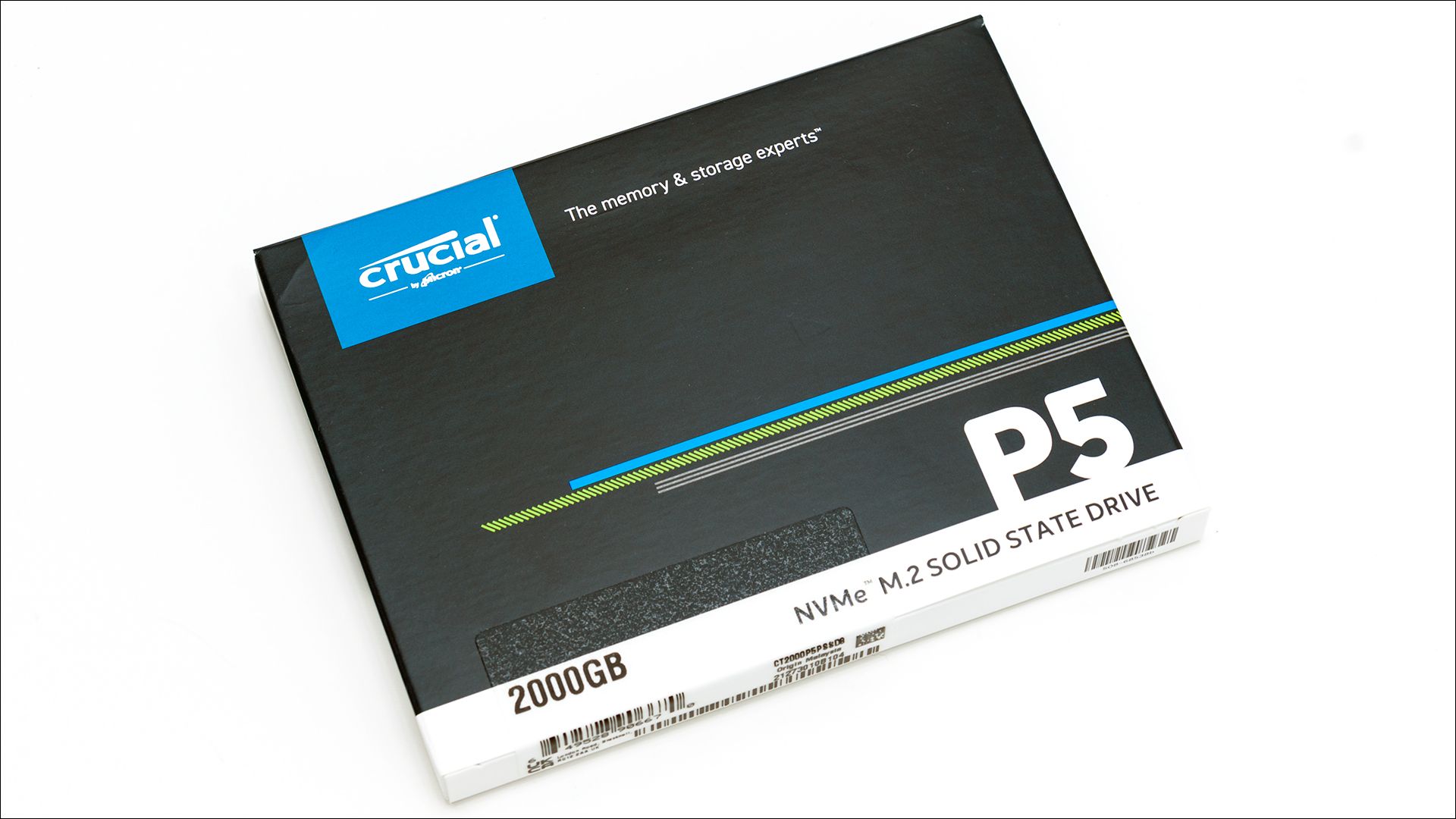
The shipping container that the EVGA GeForce GTX SC BE uses is both attention getting and incredibly durable. The outside is not over the top in its graphics but is sure to grab your attention and then suck you in with the list of features the card has. That is all par for the course these days. The protection it offers is not. It is so truly above and beyond it puts what others uses on their flagship models to shame.

Basically, when you remove the cardboard sleeve exterior you are not greeted with cardboard or clamshell protection. You are greeted with cardboard that is just there to keep the medium density foam from moving around. Yes this card is cocooned in foam that can take a real pounding without transferring any of that blunt force trauma on to the card. This is how its done folks. Best in class.

Also nice to see, is the accessories included. In addition to the usual odds ‘n’ sods of driver disc, pamphlets, dual 6 to 8 pin adapter, and even a poster, you also get the a nice dual Molex to 8-pin adapter that comes sleeved. Quite honestly most will never use this adapter – unless you are a miner in which case… it quickly goes on to a PCIe adapter board! – it just underscores EVGA’s commitment to customer satisfaction. Remember this is not a For The Win card. This is not even the flagship SuperClocked model… this is EVGA’s mid-range GTX 1080Ti. That is why miners flock to EVGA first and then think about other manufactures later.

This excellent first impression further continues once you actually catch your first glimpse of the card. Unlike other manufactures EVGA is not a big fan of plastic. That is why the fascia covering the fans and custom heatsink is made from metal… and hot diggity dog (or insert your less PC phrase of choice here) is it so sexy. So sexy that this could easily be a showcase card meant for truly custom builds you would see at various trade-shows where PR agencies try and one up each other with truly custom, splendiferous showcase systems. Once again this is EVGA’ mid-grade 1080Ti card and yet it blows the doors of the competition’s high end (read bloody expensive) models in the looks department.
The only one minor nit-pick on the aesthetic side of things is that this card is not covered in LEDs. Instead there is a few strategically placed to light up the edge and such… but compared to say ASUS models the EVGA GeForce GTX 1080Ti SC BE can not be lit up like a Las Vegas casino. Honestly, while we cannot speak for miners in general… or the typical PC gaming enthusiast, if want a light show we add in LED stripes and not rely on manufactures to bring the light. Plus, by not including as many LEDs EVGA was able to keep the price lower. We are in the minority in this and this also a reason why this card in particular will be going cheaper on the used market – as it appears that a lot of people love their shiny toys.

Digging down beyond ‘it looks like a flagship card’ the custom cooling solution it uses is also remarkable. As almost everyone knows EVGA ran into some cooling… issues with their “original” ACX design with their 10-series release. Basically, under normal circumstances the original ACX design was ‘good enough’ however miners are not typical users. What is good enough for moderate usage had a tendency to overheat and then fail. Needless to say, there was a vocal group not overly happy with EVGA in the early days of the 10-series. The end result was a two pronged solution. The first was an entire rework of the ACX cooling design and an entirely new custom cooling solution called the ‘ICX’.

At a low level what EVGA did was add a much, much more robust heat plate with small little ‘pin fins’ underneath to keep the PCB mounted components cool. This might not sound like a radically departure but these numerous small fins dramatically increase cooling area and turn what was basically an actively cooled heat spreader (i.e. what everyone uses) into a small heatsink that can actually transfer a ton of heat to the waste air from the fans. This alone dramatically increases the life-span of the critical components on the PCB. These components run the gamut from the actual power delivery to the various memory ICs.

This was only step one. Step two was to liberally sprinkle heat sensors on the PCB itself. These nine additional heat sensors are tied the to the integrated ‘fan controller’ and instead of just reading the GPU core’s temp and setting the fan speed based of it, if the PCB itself – or even just one sensor – says something is running to hot… the necessary fan ramps up. If one fan is not enough, the second also speeds up. This not only keeps the GPU temperatures under control but also keeps the RAM cool. This is very, very important to miners who stress the RAM more than the GPU core (for example RAM heavy algorithms like Equihash) and allows for even higher RAM speeds without worrying about heat related death. Basically, the ICX is a truly next generation cooling solution that is choke full of innovation that not only applies to miners but to typical PC gaming enthusiasts as well.
The ‘down side’ to this particular version of the ICX is that is only cooled by two fans and not three. This not only means the heatsink is smaller but the amount of cubic feet of air that can be moved over said heatsink per minute is lower than three fan models. In practical terms it means the two fans do run faster than on three fan models. This also means the ‘top end’ of overclocking is lower than the three fan models. As we will go over later in the review the difference in overclocking potential is not that different, but in terms of noise levels there is a difference. Honestly with five, 8mm heatpipes and two uber smart fans on this custom heatsink the typical PC gaming enthusiast will barely hear the difference as it is more of a low level hum and not a ‘buzz-saw vs background noise’ levels typically associated with two vs three fans.

Miners… well miners are used to noise. Expect it to be about twice as loud after 24hrs of constant use compared to 3 fan models. That may sound ‘huge’ but for the most part the fans ramp up to a about 65-70 percent and its less than 3 decibels difference vs the FTW3 GTX 1080Ti. This is the major tradeoff with this model vs more expensive models. Honestly if noise is a major concern… pull the ICX cooler off and stick an after market on it. Be it a massive air or heavy duty water based cooling solution. The end net cost will be the same as the FTW3 (which is also ICX based) and you will get an entirely better setup.

Doing such a a cooling swap is as easy as pie as the EVGA GeForce GTX 1080Ti SC BE uses a standard PCB and not a custom layout PCB – so darn near any after-market cooling solution will work. However, most will find these dual ball-bearing fans to me more than tolerable – and much longer lived than sleeved fans used on many of the coemption. As an added bonus this card is down right tiny compared to three fan models. Concerns over ‘will it fit’ than many a PC gaming enthusiast goes through before purchase simply do not apply as this is a true two slot design in both length, width, and height.
The other tradeoff is giving up on dual BIOS options, as unlike the FTW3 this is a single BIOS only card. Quite honestly unless you are a ‘mad modder’ trying to really push the limits of sanity ‘bricking’ a 10-series card is bloody difficult. Not impossible, but difficult. As such for the typical user it is a non-issue.

As this is a more mid-priced (for a 1080Ti that is) it should come as no surprise that it uses a single 6 pin and single 8-pin PCIe connectors instead of the dual 8-pin setups like those found on FTW3 class cards. Honestly, this really is not that big a deal and the real-world impact is almost moot as this card can overclock just as much as a FTW3. That is to say you are limited by NVIDIA to 20% over TDP (300 watts). Considering a single 6 pin is good for 75 watts, the 8 is good for 150, and the PCIe slot itself is good for another 75 it’s a non-issue. 300 watts covers things – albeit right at the ragged edge. The only thing to note is this card can and will pull 75 watts from the PCIe slot so miners need to use either a 6-pin PCIe cable or a Molex. This should be a non-issue as only crazy people use SATA cables to power a riser… and is why EVGA includes the sleeved MOLEX to 6pin PCIe adapter in the first place!

One thing that does go hand in hand with this reduction in total allowable power though is a slight reduced power delivery subsystem. While still more than up to the task of handling 300 watts of power it is no where near as robust as what EVGA uses on their FTW3 model. This is to be expected. It still is very good with numerous high quality chokes and mosfets… but it is not overbuilt like the FTW series. This means it would run hotter than the early top end models if all things were equal but the fact of the matter is the early ACX based models had to be overbuilt as their cooling system is less refined. The end result is this subsystem is not going to die from heat or abuse, it just makes the card a touch louder than it would be ‘typically’. That to us is a good thing. As cool running components is the name of the game when it comes to longevity.

Not expected but nice to see is the full length heatspreader backplate. This backplate is thick and does the job nicely at helping the card run cool when stressed 24/7… as this backplate is in direct contact with another heatpipe to further reduce temperatures of critical components. The fact it really finishes off the look of the card is simply a nice bonus.

For non-miners the included ports are pretty much NVIDIA bog standard for a GTX 1080Ti. That is to say a single HDMI, a single DVI, and three DisplayPorts. Obviously is you are trying to run say three monitors off one card using only HMDI connections you are going to have a bad day, and really should meditate on your poor life decisions that led you to such a sad state, but for everyone else all the bases are nicely covered
Overall this card was obviously built from the ground up to bring ‘value’ back to a class of cards that usually never have the word in its lexicon. That to us is a major achievement. So with the nitty gritty taken care of lets show exactly why this card is such a phenomenal value and why it will be one of the cards to be on the look out for when the 11-series appears!











